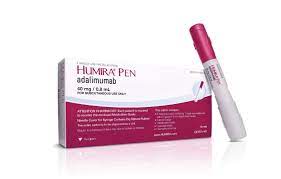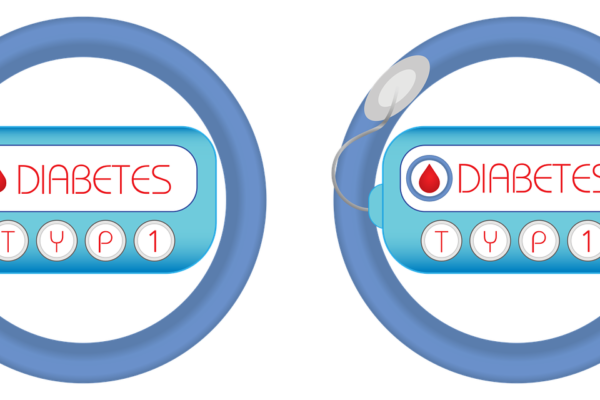Assistive technology for the elderly refers to devices, tools, and systems designed to support older adults in their daily activities, enhance their independence, and improve their overall quality of life.
With the use of assistive technology, people with disabilities can engage in civic activities, the job market, and lead a productive, independent existence. The use of assistive technology lessens the demand for long-term care, formal health and support services, and caretaker. Without assistive technology, people frequently experience exclusion, isolation, and poverty, which worsens the effects of illness and disability on an individual, their family, and society as a whole.
A person’s and their family’s health and well-being, as well as broader socioeconomic advantages, can be improved through assistive technology. For instance: A person with hearing loss has very few prospects for education and employment without proper language skills. Instead, children who wear hearing aids can improve their skills.
The use of assistive technology may help older people stay in their homes longer and postpone or eliminate the need for long-term care . For example. Diabetes-specific therapeutic footwear decreases the likelihood of foot ulcers, reducing lower limb amputations and the financial burden that follows.
Used By
Those that require assistive technology the most are:
(i) individuals with impairments
(ii) senior citizens
(iii) noncommunicable disease patients, including those with diabetes and stroke
(iv) individuals with mental health issues, such as autism and dementia those who gradually lose functional capacity.
Market Report Of Assistive Technology
According to the the ‘Disabled and Elderly Assistive Technology – Global Strategic Business Report‘ report, the global market for disabled and elderly assistive technology, which was originally projected to be worth US$25.3 billion in 2022. It has since been revised to US$82 billion, is expected to increase at a CAGR of 15.8% from 2022 to 2030.
Recently, there has been a noticeable increase in the market for assistive devices for the elderly and disabled. The population is getting older, infirmities are more common, and technology has advanced, all of which can be attributed for this.
The United Nations projects that by 2050, there will be 2 billion elderly people worldwide. The population is living longer thanks to better access to cutting-edge medical facilities. , According to the World Health Organisation (WHO), everyone will become temporarily or permanently disabled at some point in their lives and those who will live to old age are likely to experience functional difficulties. The WHO estimates that 15% of the world’s population has some kind of disability, and that 2% to 4% of these people have exponential problems with day-to-day functioning. One of the main factors affecting disabilities is the rising frequency of numerous chronic diseases like cancer, diabetes, arthritis, and cardiovascular disorders.
Moreover, some of the major known causes of disability include traffic accidents, workplace injuries, falls, confrontations, and violence. As a result, the market for assistive devices for the elderly and disabled is anticipated to rise due to the increasing prevalence of disabilities due to the aforementioned causes.
Among the aged and disabled population, mobility aids including wheelchairs, scooters, and walkers are in great demand. These tools aid in movement and increase independence while also enhancing quality of life.
The market for assistive devices has undergone a revolution thanks to technological development. The usefulness and usability of assistive equipment have been greatly enhanced by innovations like powered wheelchairs, smart home appliances, wearable technology, and robots.
As home healthcare becomes more popular post COVID, there is a rising need for assistive technologies that may be applied in residential settings. Personal care aids, monitoring systems, and home medical equipment are all examples of home healthcare equipment.
The use of Assistive Technology that is Personalized and Customized is on the rise. Manufacturers are putting more effort into creating goods that may be customized to meet specific demands, resulting in a better fit and enhanced user experience.
In terms of category, the aged and handicapped assistive devices market worldwide was dominated by mobility aids in 2020. The global need for mobility aids has increased as a result of the rising number of impairments brought on by various diseases and an ageing population.
The market participants increasing investments in incorporating technology developments into gadgets have also considerably fueled this segment’s expansion. The development of mobility assistance devices is also being fueled by the increase in traffic accidents and the resulting disability. The WHO estimates that between 20 and 50 million more individuals have non-fatal injuries as a result of traffic accidents, and these injuries lead to disability. These elements have led to the predominance of this segment.
On the other hand, the projected period is expected to have the largest opportunity in the bathroom safety market. This can be due to the increased attention being paid to enhancing the quality of life for the elderly and handicapped people. The rapid development of sophisticated assistive devices that improve the everyday functioning of the impaired has been driven by the breakthroughs in technology.
In 2020, the hospitals sector controlled the global market for assistive equipment for the elderly and disabled. This is due to a rise in traffic accidents and hospital admissions for the treatment of multiple sclerosis, cerebral palsy, paralysis, stroke, and other illnesses. The market for assistive devices for the aged and disabled is expanding primarily as a result of these diseases. The enormous demand for wheel chairs and other mobility equipment for patient movement inside hospitals has also propelled the expansion of this market.
Homecare, on the other hand, is anticipated to see the fastest growth throughout the projection period. The expansion of this market is being driven by the increasing use of home assistive devices for the disabled. Additionally, the market is expanding due to the long-term impairments brought on by ageing and other circumstances. The segment’s growth is being boosted by rising healthcare costs and growing public knowledge of the availability of numerous cutting-edge equipment.
In 2020, North America dominated the market. This is simply explained by the large number of elderly people and the rising incidence of numerous chronic illnesses including cancer, diabetes, and CVDs, which are key contributors to disability. The US Census Bureau estimates that there were around 54.1 million seniors in the US in 2019. 95 million is the estimated figure for 2050. Additionally, the market for assistive devices for the elderly and disabled in North America has grown as a result of rising healthcare costs, high disposable income, and improved knowledge of different technological gadgets.
In the United States, the market for assistive technology for the disabled and elderly is anticipated to reach US$13 billion in 2022. China, the second-largest economy in the world, is anticipated to reach a projected market size of US$5.8 billion by 2030, growing at a CAGR of 18.5% from 2022 to 2030. Japan and Canada are two other notable geographic markets, with growth rates of 14.9% and 15.4%, respectively, expected between 2022 and 2030. Germany is anticipated to expand within Europe at a CAGR of around 14.9%.
During the projected period, the market in Asia Pacific is anticipated to develop at the quickest rate. This is primarily caused by the fast expanding elderly population, increasing rates of different non-communicable illnesses, and increasing rates of traffic accidents. The United Nations estimates that nearly 80% of the world’s elderly population will reside in low- and middle-income nations. Furthermore, according to the WHO, low- and middle-income nations account for around 93% of all worldwide traffic accidents.
The market expansion in the Asia Pacific area is being driven by the expanding use of modern healthcare systems and the growing accessibility to such treatment. The ease access to assistive technology for the disabled and growing healthcare costs are driving the growth of the senior population in the Asia Pacific region.
However, there are incredibly few nations that have national assistive technology policies or programmes.
In many nations, the public sector has little or no access to assistive technology. Even in high-income nations, it is common for assistive goods to be restricted or excluded from health and welfare programmes, resulting in large out-of-pocket costs for users and their families.
For instance, it is standard practice in many European nations to only supply elderly individuals with one hearing aid, despite the fact that the majority of persons with age-related hearing loss require two hearing aids to operate.
Services are frequently standalone and not integrated even in high-income nations. Multiple appointments at various places are required of people, which adds to the cost and hardship on users, caretakers, and health and welfare budgets.
The national service delivery for assistive items does not exist in many low- and middle-income nations. Those who can purchase them directly from a pharmacy, private clinic, or workshop do so.
People from the less fortunate parts of society must rely on sporadic gifts or charity services that frequently supply significant amounts of subpar or worn goods. These frequently lack procedures for repair and follow-up and are inappropriate for the user or the setting. In emergency situations, a similar scenario is frequent.
The 2030 Agenda for Sustainable Development establishes a new development vision with a focus on people’s health and wellbeing. It places a strong emphasis on universal health coverage (UHC) to ensure that everyone may obtain the medical care they require without experiencing financial hardship.
Only if individuals have access to high-quality assistive devices when and when they need them can universal health coverage be expanded inclusively.
For the Sustainable Development Goals, Universal Health Coverage (UHC), and implementation of the UN Convention on the Rights of Persons with Disabilities, which has been ratified by 177 countries, it is imperative to address the unmet demand for assistive devices.
Making sure the elderly, persons with disabilities, and those suffering from chronic conditions are included implies “leaving no one behind.”
Global Cooperation on Assistive Technology (GATE), which aims to increase access to high-quality, reasonably priced assistive technology for everyone, is coordinated by WHO. The GATE effort is creating four useful tools to assist nations in overcoming the issues mentioned above.WHO views the GATE programme as an important step in achieving the Sustainable Development Goals, universal health care, and the rights of people with disabilities.
In addition to action plans on noncommunicable diseases, ageing and health, disability, and mental health, the GATE project will support WHO’s global strategy on people-centered and integrated health services throughout the lifetime.
The market for assistive equipment for the elderly and disabled is fairly fragmented and home to numerous major firms. To obtain a competitive edge and increase market share, many industry competitors are making significant investments in value-added services. To take advantage of the current market prospects, these market players are also using a variety of development tactics, such as product launches, collaborations, joint ventures, and mergers.
Sonova Holding AG, Invacare, AI Squared, Pride Mobility Products Corporation, Drive Medical, Starkey Hearing Technologies, GN Resound Group, Siemens Ltd., Nordic Capital (Sunrise Medical LLC), and William Demant Holding A/S are a few of the top manufacturers of assistive devices for the elderly and disabled listed in the expert report.
With the use of assistive technology, persons with disabilities may engage in civic activities, the job market, and a healthy, productive, independent existence. The use of assistive technology lessens the demand for long-term care, formal health and support services, and caretaker. Without assistive technology, people frequently experience exclusion, isolation, and poverty, which worsens the effects of illness and disability on an individual, their family, and society as a whole. This gap can be bridged by the companies involved in the ideation and manufacturer of assistive technology.
References:
https://www.who.int/news-room/fact-sheets/detail/assistive-technology
https://www.nature.com/articles/s43587-023-00392-3
https://www.linkedin.com/pulse/58-cagr-global-disabled-elderly-assistive-technology-market-sirsat
https://www.precedenceresearch.com/elderly-and-disabled-assistive-devices-market
https://www.fortunebusinessinsights.com/assistive-technology-market-105585






Leave a Reply